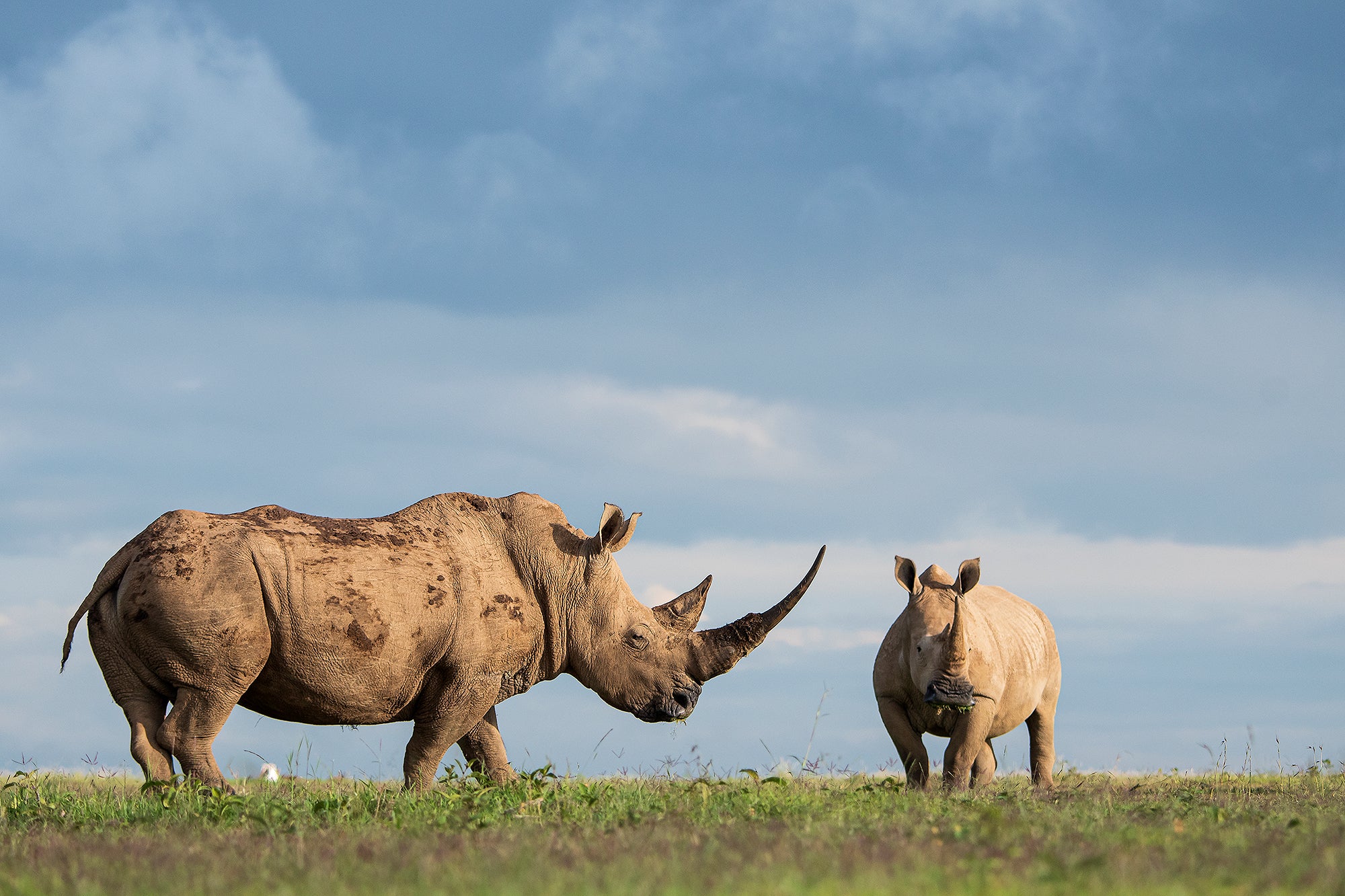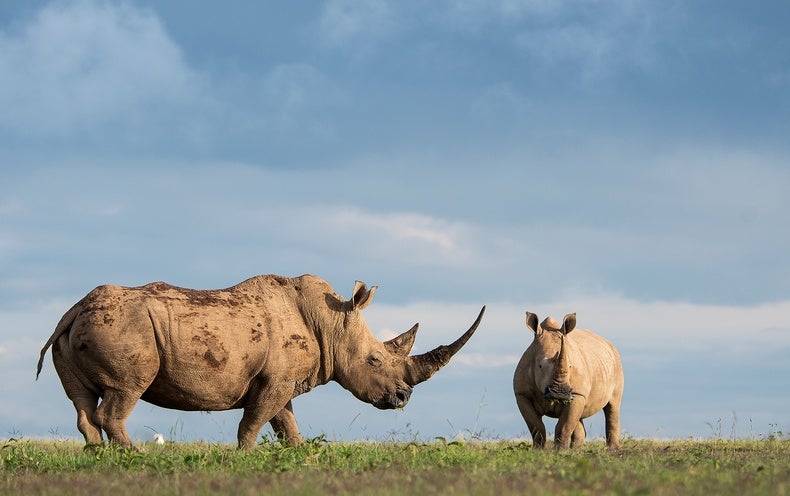[ad_1]

In 2019 and 2020, a megafire scorched eastern Australia, destroying some 24 million hectares of land, and adding to the hole in the ozone layer. Another massive fire ate away parts of Northern California in 2018, and slowly animals are starting to return. Over the years fires have scorched parts of Africa, including a 15,000-hectare disaster in the Democratic Republic of Congo.
While the frequency, intensity and severity of large-scale wildfires might be a consequence of climate change, there is another cause receiving little attention: the decline of large herbivore populations. Large herbivores regulate nature’s fire systems by eating plant matter that fuels wildfires and turning over soil and vegetation litter as a result of their rummaging behavior. But, large herbivores are in trouble. About 60 percent of species of the world’s largest terrestrial herbivores are at risk of vanishing, for two key reasons: one, because of extensive overhunting, to feed rising populations across the developing world, and two, as part of encroachment by livestock, deforestation and expanding cultivation in the developed world.
Ecosystem engineering to reintroduce large herbivores into fire-prone regions in Australia has shown some promise, yet conservationists and media outlets often portray these animals as helpless victims. As a relatively inexpensive part of any fire prevention strategy, we must prioritize the reintroduction of either wild or domestic large herbivores into fire-prone areas to help prevent these disasters.
Wildfire is not always the enemy. Low-intensity fire destroys invasive species, for example, that have not adapted. But the consequences of megafires, continuous fires that cover more than 10,000 hectares, or the equivalent of approximately 14,000 soccer fields, are uniquely devastating. Large fires, and the smoke they create, have caused the deaths of more than 30,000 people annually in 43 countries. In 2022, wildfires in the U.S. caused an estimated $18.09 billion in property damage. In addition, the U.S. National Interagency Fire Center says federal fire suppression costs have skyrocketed from $240 million in 1985 to about $3.5 billion in 2022.
Megafires are part of the blowback from the loss of biodiversity. Large herbivores like the American bison and the white rhinoceros traditionally clipped grass and ate shrubs, reducing available wildfire fuel. Their feeding habits changed the composition of vegetation over vast areas, creating diverse habitats. These habitats differed in their vulnerability to wildfires, producing a vast mosaic of natural firebreaks, which experts say affected the regularity, speed and strength of wildfires. In addition, reduced leaf matter leads to decreased flame height and rate of fire spread.
Wild herbivores also help reduce the spread of wildfires in other ways. For instance, animal trails have been proven to limit the spread of low-intensity wildfires by creating firebreaks. Large herbivores such as Cape buffalo and red deer make temporary pools by creating wallows, which also interrupt wildfires. On the southern Russian steppes, livestock populations that have declined since the fall of the Soviet Union led to an increase in fuel for wildfires; there was a rapid increase in the area burned by wildfire.
This is not just a modern phenomenon. Archeological evidence indicates that the extinction of species like mammoths, giant kangaroos and other megafauna as a result of human expansion more than 10,000 years ago, at the end of the last ice age, led to an increase in wildfires.
In the present, places like California and southern Australia have felt the brunt of these infernos almost every summer. These are areas where mild, wet winters and warm, dry summers prevail, and, unsurprisingly, these areas have had major declines in large herbivores. Among the 29 Australian terrestrial mammals that have become extinct over the past two centuries were several ecosystem engineers whose burrowing activities increased the speed of leafy debris’ decomposition.
In 2022, California’s black-tail deer and mule deer populations was estimated to be around 475,000 according to the California Department of Fish and Wildlife, a sharp reduction from about two million back in 1960. This decline has contributed significantly to an accumulation of flammable vegetation since one deer can consume about seven pounds of vegetation per day, about 2,555 pounds annually.
Rewilding large wild and domestic herbivores for wildfire prevention has worked before. Researchers in Australia reintroduced “ecosystem engineers” including species of rat and wallaby, to areas from which they had disappeared. Leaf litter was significantly lower, and fire behavior modeling illustrated these animals had substantial impacts on flame height and speed. Livestock grazing has also reduced fire frequency in Southern Arizona. Another example is the reintroduction of giant tortoises to Española Island in the Galápagos, which has regulated shrubbery and created mosaics of vegetation, mitigating the spread of wildfires.
Every ecosystem will need a specific plan. For example, to address the fire risk on abandoned farmland, a specific kind of livestock would have to perform extensive or targeted intensive grazing, which is the use of domesticated large herbivores for a predetermined duration and intensity.
According to experts, the most effective strategy generally is to combine both grazing and browsing herbivores in sufficient numbers with browsers feeding primarily on leaves, soft shoots or fruits of woody plants like shrubs, while grazers eat grass and other herbaceous plants. Additionally, herbivore food preferences need to match the local vegetation. For example, certain types of goats have been found to have more of an impact in reducing fuel biomass than cows because the former feeds on more diverse vegetation types than the latter.
Cows would be more useful in predominantly grassy environments as their diet is fairly restricted to grasses, while some larger breeds of goats have a wider variety of vegetation in their diets including branches, young trees or tree bark that other herbivore species find inedible. Herbivore reintroduction may also need to be combined with other strategies like mechanical clearing to reduce wildfire damage.
Ignoring the benefits of reintroducing large herbivores into fire-prone regions will risk the lives of people who live in these areas, could ruin national economies, and will threaten biodiversity and vital habitats. Megafires also release large amounts of stored carbon, worsening climate change. This summer has witnessed megafires in Hawaii, Canada, Algeria and Greece. But equally worrying is that large wildfires are occurring where they previously did not.
Successful land-management strategies must be all-inclusive and involve a variety of groups and individuals who have a vested interest in reducing fire risk. This includes ranchers, NGOs, fisher-folk, hunters, Indigenous peoples, landowners and recreationists. Funding for rewilding projects can help turn the tide against the global decline and disappearance of these large and environmentally influential plant consumers. Such efforts can also boost economic activities like biodiversity conservation and ecotourism.
This is an opinion and analysis article, and the views expressed by the author or authors are not necessarily those of Scientific American.
[ad_2]
Source link












































